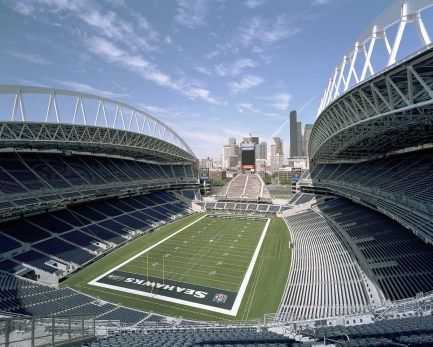 |
|
| CenturyLink Field reduced energy costs by 21% over the last decade despite growing its visitor attendance. Photo: Wiki Commons |
September kicks off the start of another football season. And, while most fans will be focused on what’s happening on-the-field, there’s another storyline already forming off of it. Many NFL stadiums are scoring big on energy savings and tackling waste at the same time—adding even more value to the game day experience.
"These iconic stadiums are using the most innovative technologies and strategies today to save energy and water,” said Jason Hartke of the Building Technologies Office, who spearheaded a recent U.S. Department of Energy report examining how sports teams and venues can save energy. “They’re not just demonstrating great leadership in efficiency, they’re spreading the word to millions of people across the country.”
NFL stadiums are some of the largest sport venues in America. Many of them are more than one million square feet and are in the top 0.1%, by size, of all U.S. commercial buildings. This means they require large amounts of operating energy—but also provide plenty of opportunities for savings.
Here’s how CenturyLink Field stacks up:
CenturyLink Field, home of the Seattle Seahawks, implemented a robust sustainability program over the last decade, resulting in a 21% reduction in annual energy costs—even in the face of rising visitor attendance. The stadium uses high-efficiency lighting and point-of-use lighting controls in concession stands, restrooms, and storage spaces to make sure lighting is only on when needed. It also installed more than 3,500 solar panels that generate electricity equivalent to the amount needed to power 95 Seattle-area homes for an entire year. The stadium also uses a cool roof to reduce heat absorption and building energy costs.
Read the full article with a roundup of the top five NFL stadiums.